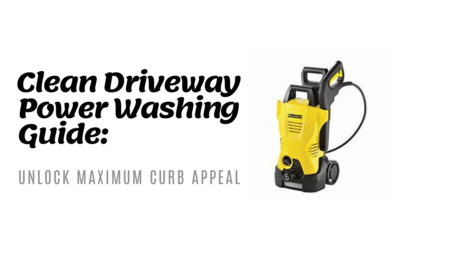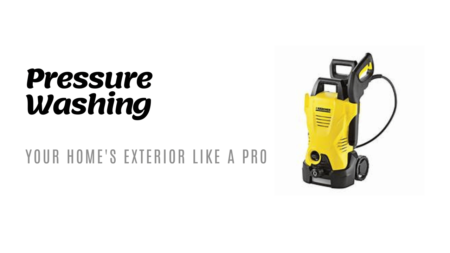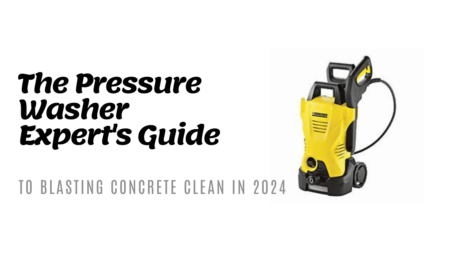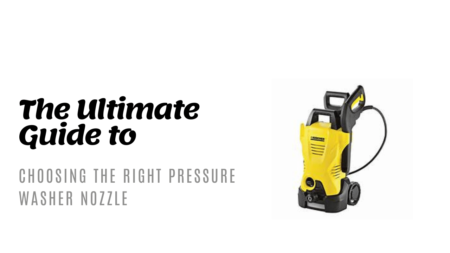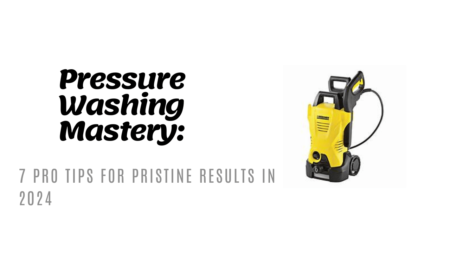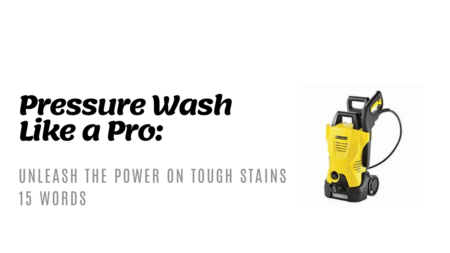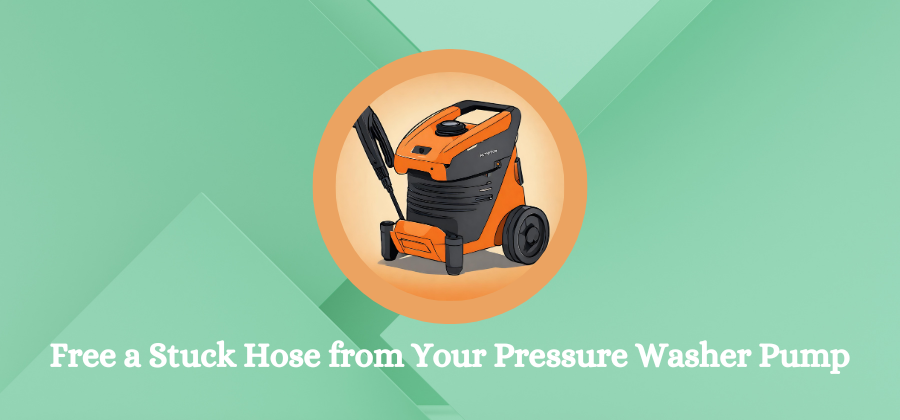
If you own a pressure washer, you know how useful it can be for cleaning various surfaces around your home, including driveways, cars, and many Other Cleaning Surfaces. But sometimes, you may encounter a problem that prevents you from using your pressure washer effectively. One of the most common issues is when the hose gets stuck on the pump and you can’t remove it easily.
This can happen due to corrosion, dirt, or damage to the connectors. How can you fix this problem and get your hose off the pump without damaging it? In this article, we will show you some simple steps and tips on how to remove a pressure washer hose stuck on the pump.
You will learn what tools and materials you need, how to release the pressure from the hose, how to loosen the connector, and how to inspect and maintain your hose and pump. By following these steps, you will be able to remove your hose from the pump and resume your pressure-washing tasks. Read on to find out more!
How to Release the Pressure from the Hose
One of the first steps to removing the pressure washer hose stuck on the pump is to release the pressure from the hose. If you try to disconnect the hose while it is still under pressure. Here is how you can release the pressure from the hose:
- Turn off the pressure washer and unplug it from the power source. This will stop the water flow and electricity to the machine.
- Squeeze the trigger on the spray gun to release any remaining water and pressure from the hose. Do this for a few seconds until no more water comes out.
- If your pressure washer has a safety lock on the trigger, make sure to unlock it before squeezing the trigger. You can also use a zip tie or a rubber band to keep the trigger pressed down while you work on the hose.
- If it has a pressure relief valve, you can also use it to release the pressure from the hose. The relief valve is usually located near the pump or on the side of the machine. It looks like a small knob or lever that you can turn or pull to open. When you open the valve, you will hear a hissing sound as the air escapes from the hose.
- After releasing the pressure, you can proceed to loosen the connector that attaches the hose to the pump.
What are some common causes of pressure washer hose damage?
Some common causes are:
Kinking
This happens when the hose is bent or twisted in a way that restricts the water flow and creates a weak spot in the hose. Kinking can reduce the hose’s lifespan and lead to leaks or bursts.
Driving Over the Hose
This can cause physical damage to the hose, such as cuts, punctures, or abrasions. Driving over the hose can also create pressure spikes that can damage the hose’s inner lining or fitting.
Abrasion
This occurs when the hose rubs against rough or sharp surfaces, such as concrete, metal, or gravel. Abrasion can wear away the hose’s outer cover and expose the inner layer to water and dirt. This can cause corrosion, contamination, or weakening of the hose.
Frequent and severe pressure shocks
These are sudden changes in water pressure that can occur when the spray gun is opened or closed, or when the water supply is interrupted. Pressure shocks can create stress on the hose and its connectors, and cause them to crack or rupture
High temperature
This can happen when the water or oil used is too hot, or when the hose is exposed to direct sunlight or heat sources. High temperatures can degrade the hose’s material and make it more brittle and prone to cracking.
Improper selection and installation
This means choosing a hose that is not suitable for the pressure washer’s specifications, such as its pressure rating, flow rate, length, diameter, or material. Improper selection can result in poor performance, leaks, or bursts. Improper installation can also cause problems, such as twisting, bending, stretching, or over-tightening of the hose.
To prevent pressure washer hose damage, it is important to follow some maintenance tips,
- Inspect the hose regularly for signs of wear and tear, such as cracks, cuts, bulges, leaks, or kinks.
- Replace the hose if it is damaged.
- Store the hose properly when not in use.
- Use the correct type and amount of detergent for your pressure washer.
- Avoid kinking, driving over, or dragging the hose across rough surfaces.
- Use a pressure relief valve to release any excess pressure from the hose.
- Use a suitable nozzle for your cleaning task and adjust the spray pattern accordingly.
- Avoid using water or oil that is too hot.
Common Causes of Hose Jamming on Pressure Washer Pumps
Having a pressure washer hose stuck on the pump can be a frustrating situation that wastes your cleaning efforts. Understanding the common causes behind this issue In this guide, we’ll delve into the reasons why hoses often get jammed on pressure washer pumps and provide a guide on how to avoid these problems.
Hose Misalignment and Incorrect Attachment
If the hose isn’t connected straight or if it’s twisted during installation, it can lead to kinks and ultimately jamming. Ensure that the hose is securely attached, straight, and without any twists.
High Water Pressure
It can cause the hose to swell, making it difficult to remove it from the pump. This can occur when the pressure washer is operated at a higher level than recommended.
Water Temperature Fluctuations
This can affect the hose’s material properties, making it expand or contract unexpectedly. This can lead to a snug fit on the pump’s connectors.
Hose Material and Quality
Low-quality hoses may have less flexibility and could be prone to kinks and binding. Invest in a high-quality, flexible hose.
Residue and Debris Buildup
The accumulation of dirt, grime, and debris on the pump’s connectors and hose fittings can create friction, making it harder to remove the hose. Regularly clean both the hose and the pump’s connectors.
Inadequate Lubrication
Lack of proper lubrication can cause the hose to stick to the pump’s connectors over time. Applying a suitable lubricant to the fittings before attaching the hose can help reduce friction and make it easier to remove the hose later.
Troubleshooting Hose Sticking Issues
Dealing with a pressure washer hose stuck on the pump can be a frustrating challenge, but a methodical troubleshooting approach can help you uncover and tackle the root causes of this problem. we’ll walk you through step-by-step troubleshooting methods to resolve hose-sticking issues and get back to your cleaning tasks smoothly.
Inspect Hose Alignment and Attachment
Initiate your troubleshooting by carefully examining the alignment and secure attachment of the hose at both the pump and the spray gun or wand. Eliminate any twists or kinks in the hose.
Check for Kinks and Twists
Conduct a thorough visual inspection of the entire length of the hose to identify kinks or twists that could obstruct water flow and lead to sticking. Gently untangle any kinks or twists you find.
Assess Water Pressure Settings
Verify that your pressure washer is operating within the recommended pressure range. Extremely high water pressure can cause the hose to expand, making it tough to detach.
Evaluate Hose Material and Quality
Factor in the quality and type of hose you’re using. Opting for high-quality hoses specifically designed for pressure washers can significantly reduce the likelihood of kinks and sticking.
Avoid Temperature Extremes
Adhere to the suggested temperature range when operating your pressure washer. Extreme temperature variations can lead to hose material expansion or contraction, contributing to sticking issues. Use your pressure washer in optimal weather conditions.
Seek Professional Assistance
Should your troubleshooting efforts prove unsuccessful, don’t hesitate to reach out for expert guidance. Contact the manufacturer’s customer support or a professional technician experienced in pressure washer maintenance and repair.
Conclusion
Having a stuck hose on your pressure washer pump can be frustrating and time-consuming. It can prevent you from completing your cleaning tasks and damage your equipment. Fortunately, there are some tips and techniques that you can use to free a stuck hose from your pressure washer pump safely and easily. In this article, we have discussed some of the common causes of hose jamming, such as corrosion, dirt, or damage. We have also explained some of the basic steps and tips to remove a stuck hose from your pressure washer pump.
